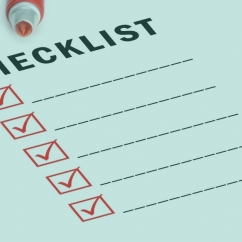Jewelry ECOMM Tech
Using a “Content Creation & Delivery Checklist” To Maximize Promotions February 09, 2019 (0 comments)

 Everything you do online begins with content - period. Needing to create content that people actually want to read is how marketing has been for centuries. Today, it’s just different. The stories that people share are done so on social media and Google. There are very few things that will hinder a company's success online more than a poor content delivery strategy.
Because of these things, we need to take our content planning and distribution very seriously. Though, it’s sometimes easy to forget all the steps we need to take to make our content a success! This is way it’s important to have a “Content Creation & Distribution Checklist”. This is a very simple document to reference each time you create a blog post or other piece of shareable content. It's just a checklist to have on hand so you don’t forget any crucial steps while distributing your content.
Of course, every company is going to have a different checklist based on the type of content they plan on creating, how they plan on promoting it, and what it all entails. But, here are some key things I would consider when planning your CCDC.
Everything you do online begins with content - period. Needing to create content that people actually want to read is how marketing has been for centuries. Today, it’s just different. The stories that people share are done so on social media and Google. There are very few things that will hinder a company's success online more than a poor content delivery strategy.
Because of these things, we need to take our content planning and distribution very seriously. Though, it’s sometimes easy to forget all the steps we need to take to make our content a success! This is way it’s important to have a “Content Creation & Distribution Checklist”. This is a very simple document to reference each time you create a blog post or other piece of shareable content. It's just a checklist to have on hand so you don’t forget any crucial steps while distributing your content.
Of course, every company is going to have a different checklist based on the type of content they plan on creating, how they plan on promoting it, and what it all entails. But, here are some key things I would consider when planning your CCDC.


